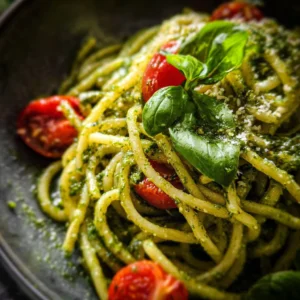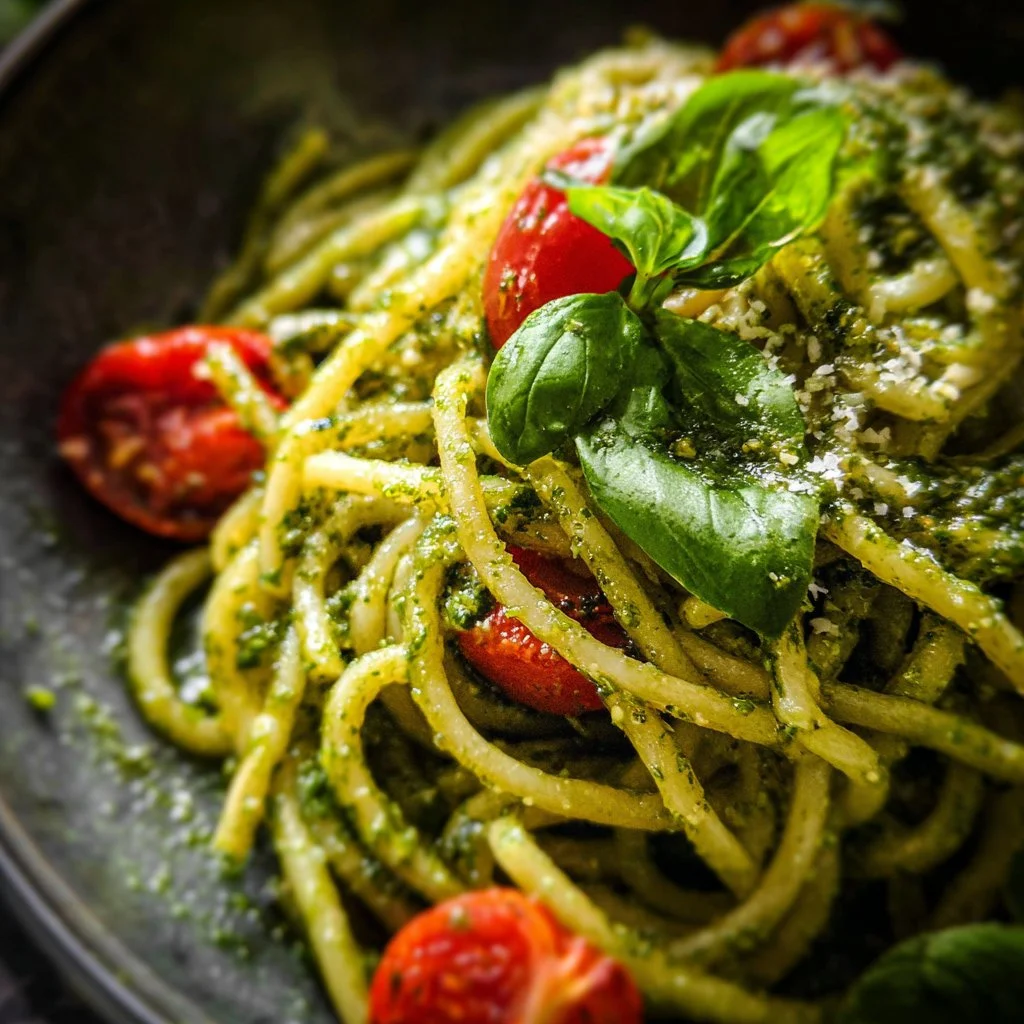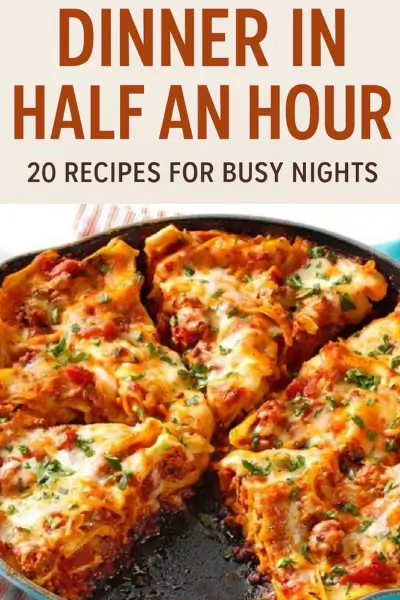Pasta has a special place in the hearts of food lovers worldwide, and Pesto Pasta is one of those dishes that truly showcases the magic of simplicity. It is a dish that balances flavors and textures, inviting you to savor every bite. The vibrant green of the basil, the rich taste of toasted walnuts, and the subtle saltiness of Parmigiano-Reggiano come together in a union that feels both refreshing and comforting. This Pesto Pasta recipe is not just a meal; it’s an experience that captures the essence of Italian cuisine. Today, let’s dive into the details of creating this flavorful delight.
Why We Love This Pesto Pasta Recipe
What makes Pesto Pasta stand out? It is the fusion of fresh, quality ingredients that results in a dish bursting with flavor. The beauty of this recipe lies in its versatility. You can easily adapt it by adding vegetables, proteins, or different types of pasta, allowing it to cater to varying dietary preferences. Furthermore, the preparation is straightforward and quick, making it an ideal choice for weeknight dinners or meal prepping for the week. The fresh basil and garlic create an aromatic experience that beckons you back for seconds.
Ingredients About Pesto Pasta
Making Pesto Pasta involves a few simple and fresh ingredients that combine to create a robust flavor profile. For the best results, use high-quality, fresh ingredients as follows:
- 1/3 cup walnuts, toasted: These add a delightful crunch and nutty flavor to the pesto.
- 2 large cloves garlic, roughly chopped: Essential for that aromatic kick.
- 2 cups packed fresh basil leaves: The star of the show, offering freshness and vibrancy.
- 1/2 teaspoon salt: Enhances the overall flavor.
- 1/4 teaspoon freshly ground black pepper: Adds a hint of warmth.
- 2/3 cup extra virgin olive oil: Binds everything together and brings richness.
- 1/2 cup grated Parmigiano-Reggiano: Perfectly complements the pesto with a salty, cheesy touch.
- 1 pound (16 oz) pasta, any shape: Choose your favorite type for a personal touch.
- Salt and freshly ground black pepper to taste: For final seasoning adjustments.
- Parmigiano-Reggiano for serving: Optional for an extra cheesy finish.
- Fresh basil leaves for serving: Optional but adds a lovely touch of color.
How to Make Pesto Pasta Directions
Creating Pesto Pasta is a straightforward process that welcomes you into the world of homemade sauces. Follow these steps for a delicious dish that you can feel proud of:
Prepare the Water for Pasta: Start by bringing a large pot of generously salted water to a rolling boil. The salt not only flavors the pasta but also enhances the overall taste of your dish.
Cook the Pasta: Once boiling, add in your chosen pasta. Cook it according to the package instructions until al dente, which typically means it should be tender but still firm to the bite. Be sure to reserve a cup of the cooking water, as this will help loosen your pesto later.
Make the Pesto: While the pasta cooks, it’s the perfect time to make your pesto. In a food processor, combine the toasted walnuts and roughly chopped garlic. Pulse the mixture until the walnuts are coarsely chopped.
Add the Remaining Ingredients: Now, it’s time to layer in the fresh basil leaves, salt, and freshly ground black pepper. Blend these ingredients until they form a coarse paste; this will be the base of your sauce.
Incorporate the Olive Oil: With the processor running, slowly drizzle in the extra virgin olive oil while blending. This helps emulsify the oil into the mixture, creating a smooth and creamy consistency.
Final Touches: Add the grated Parmigiano-Reggiano into the pesto and process for another minute. This cheese adds depth and flavor, enriching your sauce.
Combine Pasta and Pesto: Drain your pasta and return it to the pot. Toss the hot pasta with the freshly made pesto, adding in about half a cup of the reserved cooking water. Stir until the pasta is thoroughly coated. Add more cooking water if necessary to achieve the desired sauciness.
Taste and Adjust: Before serving, taste the dish and adjust the seasoning with more salt and pepper if needed.
How to Serve Pesto Pasta
Plating your Pesto Pasta is almost as exciting as making it. Serve the pasta in generous portions onto warmed plates. For a touch of elegance and to heighten the flavors, consider garnishing with additional grated Parmigiano-Reggiano on top. A few fresh basil leaves can also enhance the visual appeal and bring a pop of color.
If you’re entertaining guests, a simple side salad or some crusty bread would pair beautifully with this dish. For a cozy family meal, you can enjoy it as is or add proteins like grilled chicken or shrimp for a heartier option. No matter how you choose to serve it, the presentation will surely excite appetites.
Expert Tips: Pesto Pasta
To ensure your Pesto Pasta recipe turns out perfectly every time, keep the following tips in mind:
Fresh Ingredients are Key: Use the freshest basil you can find for a vibrant flavor. Avoid drying out or wilting leaves.
Customize Your Nuts: While walnuts are traditional, feel free to experiment with other nuts, like pine nuts or almonds, for different flavor profiles.
Adjust the Texture: If your pesto seems too thick, gradually add more reserved pasta cooking water until you reach the ideal consistency.
Creamier Version: For a creamier option, blend in a splash of heavy cream or a dollop of ricotta cheese.
Make Ahead: Pesto can be made ahead of time and stored. Just remember to add a thin layer of olive oil on top to prevent browning.
How to Store Pesto Pasta
Storing any leftover Pesto Pasta is easy, allowing you to enjoy it on another day. Place the cooled pasta in an airtight container and store it in the refrigerator. It should remain fresh for up to 3 days. When you’re ready to eat, simply reheat it in a pan on low heat, adding a splash of olive oil or reserved pasta water to loosen it up.
If you want to store pesto sauce separately, it can be kept in the same way. Pesto can also be frozen; just pour it into ice cube trays, freeze them, and then transfer the cubes to a freezer bag for easy future use.
Variations of Pesto Pasta
One of the best features of Pesto Pasta is its versatility. You can easily switch up the recipe to suit your taste or dietary needs. Here are some variations you might enjoy:
Vegetable-Loaded Pesto Pasta: Toss in sautéed vegetables like zucchini, bell peppers, or cherry tomatoes for added nutrition and color.
Protein Boost: Incorporate grilled chicken, shrimp, or tofu to turn it into a complete meal packed with protein.
Spinach or Kale Pesto: If you’re looking for a different green flavor, substitute part of the basil with spinach or kale for a nutrient boost.
Sun-Dried Tomatoes: Mix in some chopped sun-dried tomatoes for a sweet and tangy twist.
Nutritional Yeast: For a vegan version, replace the cheese with nutritional yeast, which will still give a cheesy flavor without dairy.
FAQs About Pesto Pasta
What is Pesto Pasta?
Pesto Pasta is a classic Italian dish made by combining pasta with a flavorful sauce made from fresh basil, nuts, olive oil, and cheese. The dish is known for its vibrant color and rich taste, making it a favorite among pasta lovers.
How do I make pesto pasta from scratch?
To make pesto pasta from scratch, you simply cook your pasta, prepare the pesto with fresh basil, nuts, garlic, olive oil, and cheese, and then combine them, adjusting with pasta water if necessary.
Can I use any type of pasta for pesto?
Yes, you can use any shape of pasta that you prefer. Different shapes hold onto the sauce differently, so choose based on your personal taste.
Is Pesto Pasta healthy?
Pesto Pasta can be a healthy option when made with fresh ingredients. You can boost its nutritional value by adding vegetables or using whole grain pasta, making it more filling and balanced.
Can I store leftover pesto pasta?
Absolutely! Leftover pesto pasta can be stored in an airtight container in the refrigerator for up to three days. It’s best to reheat it gently to maintain texture.

Pesto Pasta
Ingredients
- ⅓ cup walnuts toasted
- 2 large cloves garlic roughly chopped
- 2 cups packed fresh basil leaves
- ½ teaspoon salt
- ¼ teaspoon freshly ground black pepper
- ⅔ cup extra virgin olive oil
- ½ cup grated Parmigiano-Reggiano
- 1 pound pasta any shape
- to taste salt and freshly ground black pepper
- for serving Parmigiano-Reggiano
- for serving fresh basil leaves
Instructions
- Bring a large pot of salted water to a boil.
- Cook the pasta according to package instructions until al dente. Reserve 1 cup of cooking water, then drain the pasta.
- In a food processor, combine the toasted walnuts and garlic. Pulse until coarsely chopped.
- Add the basil, salt, and pepper, and blend until a coarse paste forms.
- With the processor running, slowly drizzle in the olive oil until emulsified and smooth.
- Stir in the grated Parmigiano-Reggiano and blend for another minute.
- Return the drained pasta to the pot and toss with the pesto, adding reserved pasta water as needed to achieve desired consistency.
- Taste and adjust seasoning with more salt and pepper if necessary.
- Serve immediately, garnished with additional Parmigiano-Reggiano and fresh basil leaves if desired.
Send me this recipe!
Just enter your email below and get it sent straight to your inbox!


